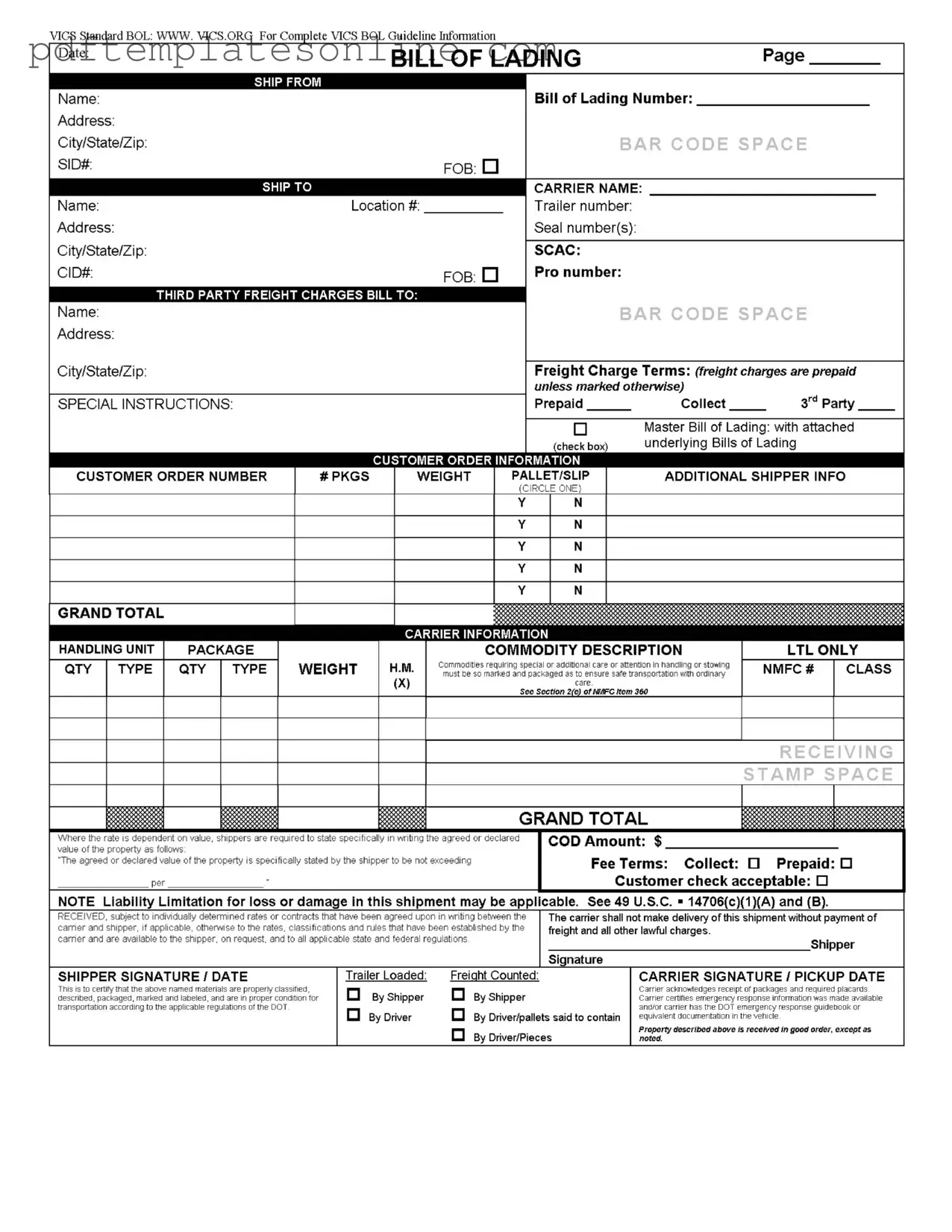Filling out the VICS Bill of Lading (BOL) form correctly is crucial for ensuring smooth transportation and delivery of goods. However, there are common mistakes that individuals often make during this process. Understanding these errors can help prevent delays and complications.
One frequent mistake is incomplete information. Many individuals fail to provide all required fields, such as the shipper's name, address, and contact details. Omitting any of this information can lead to confusion and potential delivery issues.
Another common error is incorrect weight and quantity entries. It is essential to accurately list the weight and quantity of packages being shipped. Inaccurate data can result in additional charges or refusal of the shipment by the carrier.
People also often overlook the special instructions section. This section is critical for providing specific handling instructions. Failing to utilize this space can lead to mishandling of sensitive or fragile items.
Additionally, many individuals neglect to check the appropriate freight charge terms. Whether charges are prepaid, collect, or billed to a third party must be clearly indicated. Misunderstandings in this area can create financial disputes later on.
Another mistake involves the failure to declare the value of the shipment. If the rate depends on value, it is necessary to state the agreed or declared value explicitly. Not doing so may limit liability for loss or damage.
People frequently make errors in the commodity description section as well. Providing vague or inaccurate descriptions can lead to misclassification, which may result in additional fees or legal issues.
Moreover, individuals often forget to obtain the necessary signatures on the form. The shipper's and carrier's signatures are vital for validating the document. Without these, the shipment may not be recognized as officially recorded.
It is also important to pay attention to the trailer and seal numbers. These identifiers must be accurately recorded to ensure proper tracking of the shipment. Mistakes in this area can complicate the logistics process.
Lastly, individuals sometimes fail to review the entire form before submission. A thorough review can catch errors and omissions that might otherwise lead to significant problems. Taking the time to double-check all entries can save time and avoid complications down the line.
